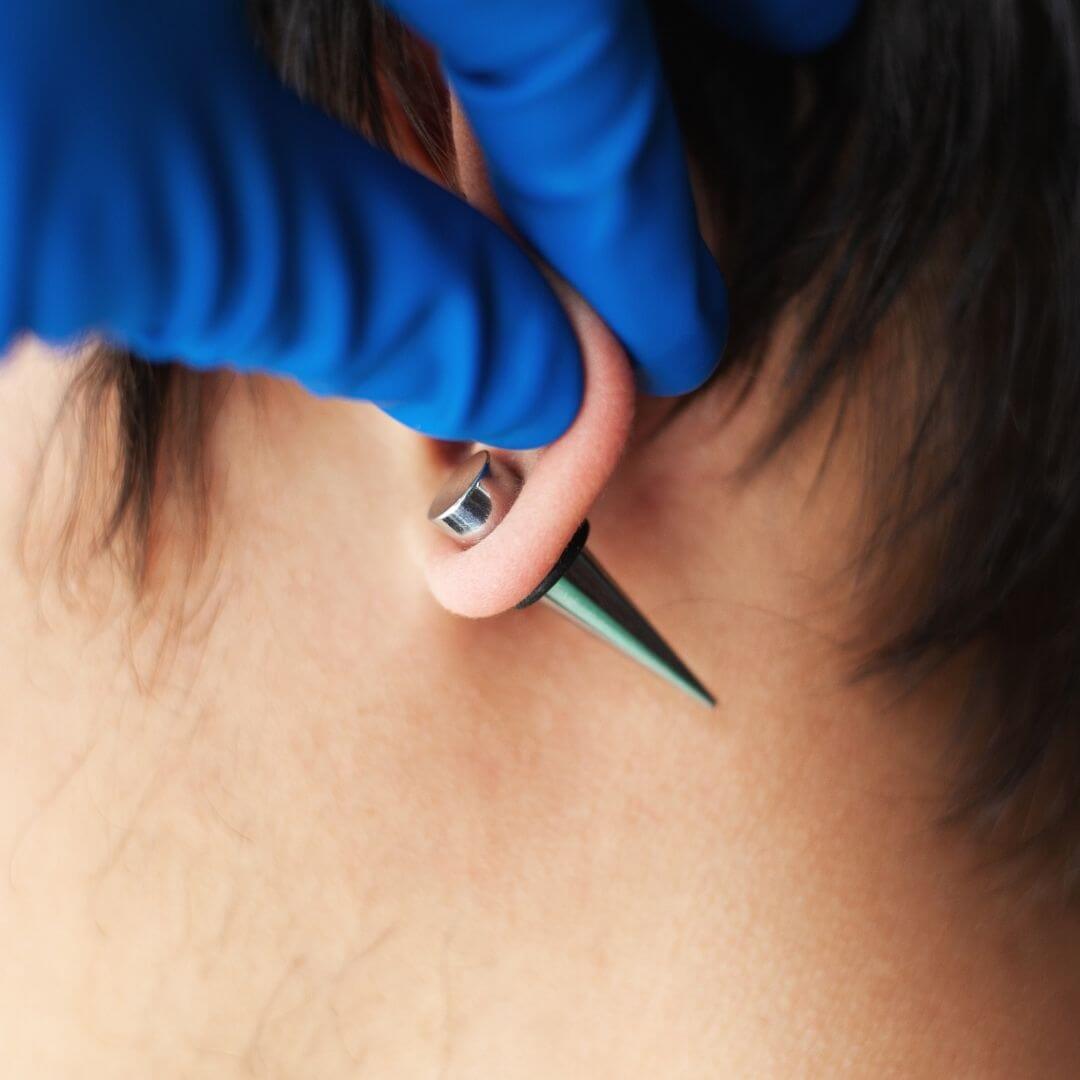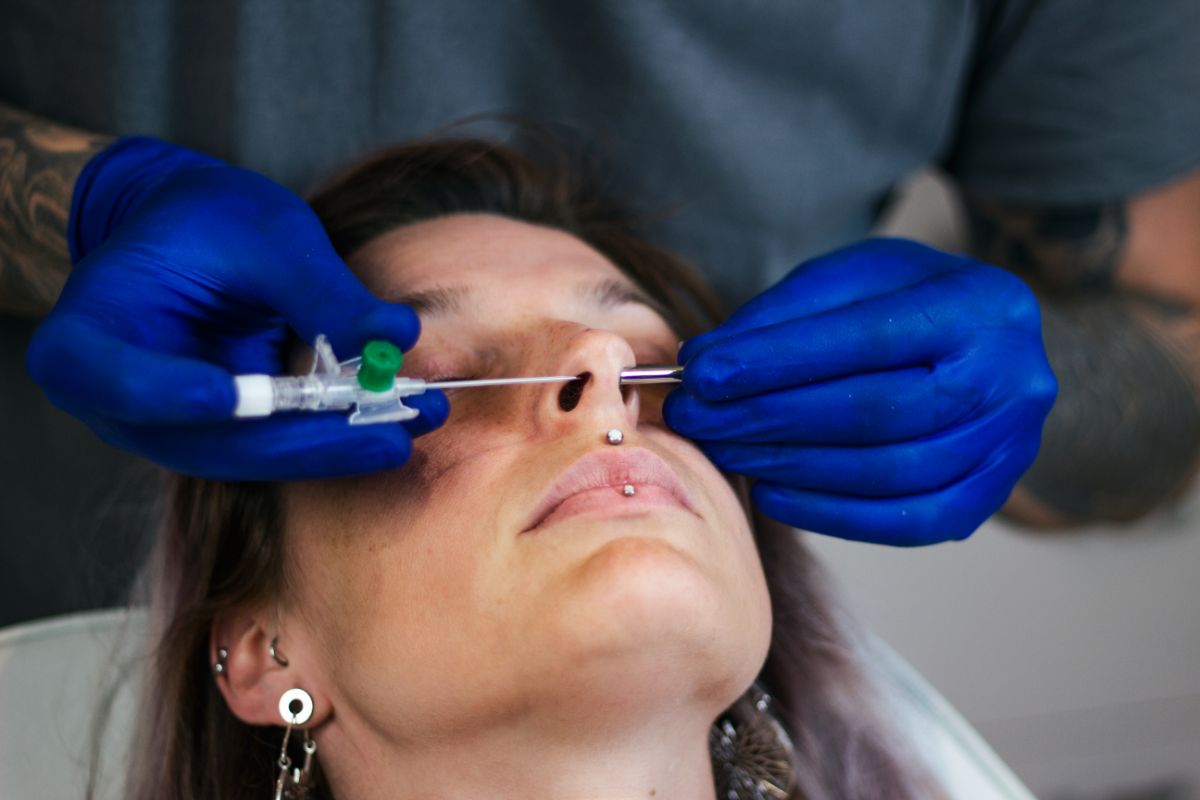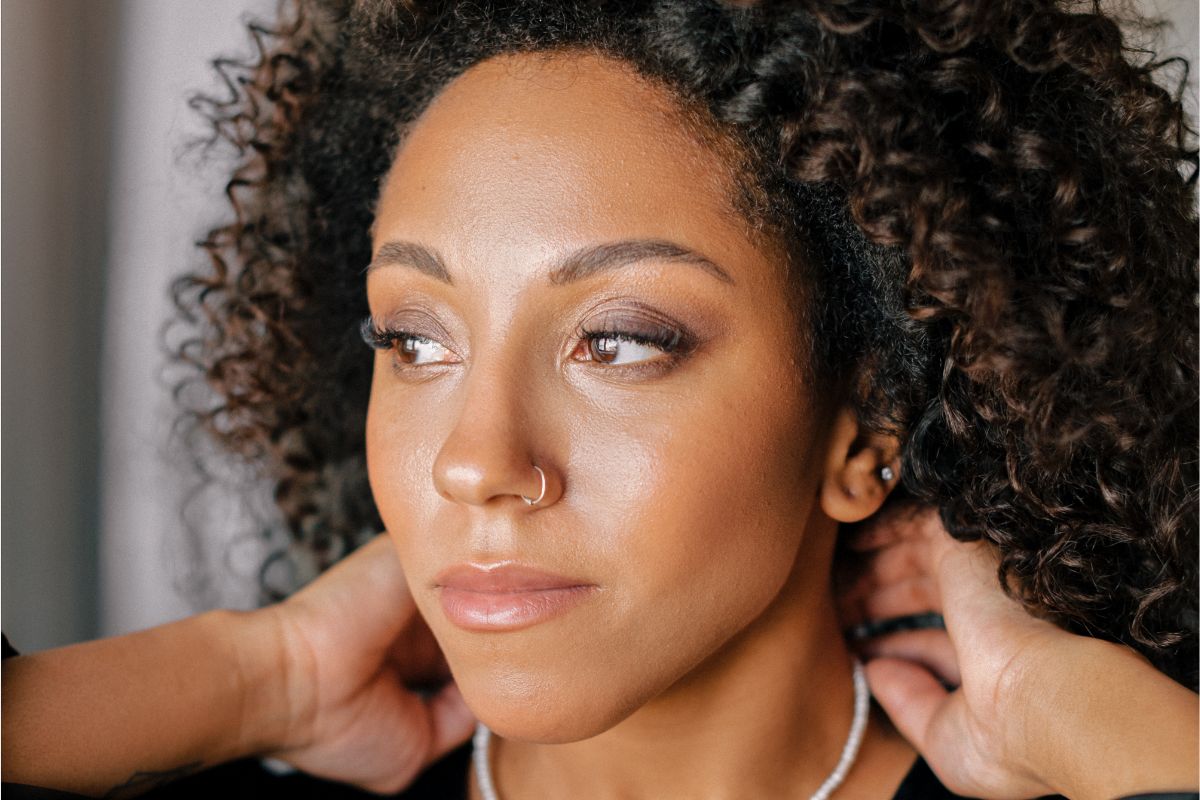Have you ever heard of ear stretching before? If you haven’t, a quick Google search will show you images of ultra-stretched pierced holes. One look, and it will instantly catch your attention.
Of course, a typical ear piercing is as tiny as a needle hole, but did you know that you can stretch that hole out to make it as big as the base of your mug? That’s what ear stretching is about. Ear stretching or better known as ear gauging, is the process of gradually stretching the piercings in your earlobes.
This isn’t an easy process. It requires a lot of time and effort because if it’s not done right, it can lead to scarring, permanent damage and put you at risk of an infection. So before you decide to do it, make sure you’ve done your research and learned everything there is to know about ear stretching.

Introduction to Ear Stretching
Ear stretching has been practiced for centuries and continues to be used today. If you ever want to stretch your ears, make sure you find a professional piercer. Professional piercers have the skills, knowledge, and instruments needed to properly and safely gauge your ears until you are satisfied with the size.
Professional piercers will also teach you how to care for your piercing so it won’t get infected. You’ll be given kits after your first piercing so you can do ear stretching at home.
Determining the Size of The Stretch
Most people usually start with a 14 gauge and then increase it to a size 12 gauge taper. If you already have existing piercings, then you probably already have your ears slightly stretched, especially if you love wearing large and heavy jewelry.
Slow Stretching Is Ideal
Some people are so impatient that they demand to increase the size too soon. We hate to break it to you, but ear stretching is a slow process that can take a while. If you hire a professional piercer, they’ll explain why slow is best. When getting your ears stretched, do it one gauge at a time.
Make sure your ears have fully healed before you begin with a new stretch. Be careful with the materials you use. Select materials that aren’t prone to accumulating bacteria and causing infection, as these can impede the healing process and predispose you to infection.
How Long Does Ear Stretching Take
You can get your ears stretched anytime you want. However, your piercer will evaluate your ear piercings to confirm if they are completely healed. If you recently had your ears pierced, you should wait at least six months. Only then will you be able to achieve an even ear stretch.
Closing of Stretched Ears
One of the most frequently asked questions is how long does it take for stretched ears to close. Well, it varies from person to person.
But there are several factors that can influence how long it will take, like the elasticity of your skin, the size of your earlobes, the time it took for your piercer to stretch your earlobes, problems encountered during the process of ear stretching, and how well you follow aftercare instructions.
For smaller gauges, it would typically take up to 4 months, but for larger gauges, it can last between 1 to 2 years.
Pain Level of Ear Stretching
Ear stretching can sting and tingle a little. If you experience pain after the plug or taper is inserted then it’s possible that the size may be too big. In such a case, your piercer may recommend a smaller gauge.
The pain is only minimal, and you will only experience mild discomfort. Intense pain could signal that you are stretching too fast.
The Permanence of Ear Stretching
Is ear stretching permanent? Some people choose to get a 0 gauge and then have the hole shrink back without a problem. But, this doesn’t apply to everyone.
Several factors can affect the shrinking of the ears, such as the amount of time it takes for your earlobes to heal after the stretching process, the amount of scar tissues developed after the stretching, and how long you’ve had your ears stretched. If you choose a 0 gauge and a four gauge, you cannot revert back to the original size.
Shrinking Stretched Ears That Do Not Close
What are you going to do if your ears won’t shrink or close? You have two options. Your first option is to wear plugs and tunnels with the smallest size. This is the size your ears will shrink to. The second option is to have the holes stitched and to undergo surgery to bring them back to their original size.
Inserting The Plugs
One of the questions that gets asked a lot is how to insert the plugs. Of course, the ideal time for you to insert the plugs is after taking a hot shower. The warm temperature of the water will help make your skin more elastic and makes the insertion process more comfortable.
Materials Needed for Ear Stretching
Obviously, we will not suggest that you do ear stretching at home. For safety reasons, you should go to a reputable and trusted piercing shop. Have your ears pierced by a skilled professional and allow the piercings to heal.
This would take several months. Ear stretching should not be rushed to avoid complications. Take your time finding a licensed piercer. Read reviews and do your research to ensure that they use sterilized equipment to minimize your risk of contracting HIV or hepatitis.
The essential tools needed in ear stretching are tapers, plugs, and a lubricant.
Tapers – these are sharp elongated tools that your piercer will place into your piercings to stretch the skin. Tapers come in different sizes. The gauge selected will depend on your preferred stretch out size. They are usually made of steel or acrylic. Most people prefer steel because it is easier to insert, but it can be expensive.
Plugs – These are round-shaped jewelry that your piercer will place in your stretched ear. They can be made from steel, silicone, organic materials, or titanium.
Lubricant – lubricant is applied to ease the insertion of the taper into your skin. Some shops sell commercial-grade lubricants, but if you prefer plant-based you can use jojoba oil or coconut oil.
Caring for Ears After Stretching
After you’ve had your ears stretched, your next move is to simply wait. If you force your ears to stretch out prematurely, you can potentially injure or tear up your cartilage. If you’ve reached the desired size, here’s what you need to do.
- make sure you wash your piercing at least two to three times a day
- soak your earlobes with warm saline solution at least two times a day
- massage your earlobes once a day using jojoba oil or coconut oil to keep them moisturized
- if you intend to get another gauge, make sure you wait at least six weeks
- check your piercing for any irritation, swelling, and redness after six weeks (the healing process can be shorter or longer than six weeks)
- avoid touching your piercing, especially if you haven’t washed your hands with soap and water to prevent bacterial infection
- don’t let anything get caught in your piercing to avoid irritation
- it’s normal for a gauged ear to smell a bit that’s because of the dead skin cells, but if the odor continues and becomes stronger, you need to let your piercer and medical doctor know about it
Ear stretching may look intimidating, but it’s a really simple and straightforward process, and it’s one hundred percent safe given that you find a reputable and skilled piercer. The critical thing to remember is to not speed up the stretching process.
Allow your skin to heal before you stretch it out; otherwise, you could permanently damage your ears or cause an infection. Some of the signs of an infected piercing include bleeding, swelling, pain, redness, green or yellow discharge, and fever.
When you force your ears to stretch out, a blow-out can happen. As a consequence, scar tissues will form in the hole and cause permanent scarring. It may also cause the skin of your earlobe to detach.
Besides waiting patiently, you must also take good care of your ears; this is probably the most essential part. Follow your piercer’s aftercare instructions diligently. If you do all these, you should be fine.

Searching For A Piercing Cleaning Solution?
If you're looking for a safe product to clean your piercings, Dr. Piercing Aftercare can help.
At Dr. Piercing Aftercare, we've developed convenient medicated swabs that you can use to clean your piercings and keep infection away. We are proud of our products. They are made and tested in a cGMP compliant and FDA-registered facility in America.
We use advanced technology on our swabs for easy application. Each pack contains thirty-six medicated swabs that are proven and tested to promote your body's natural healing process while preventing infection. Contact us today, or you can check out our website to learn more about our products.





